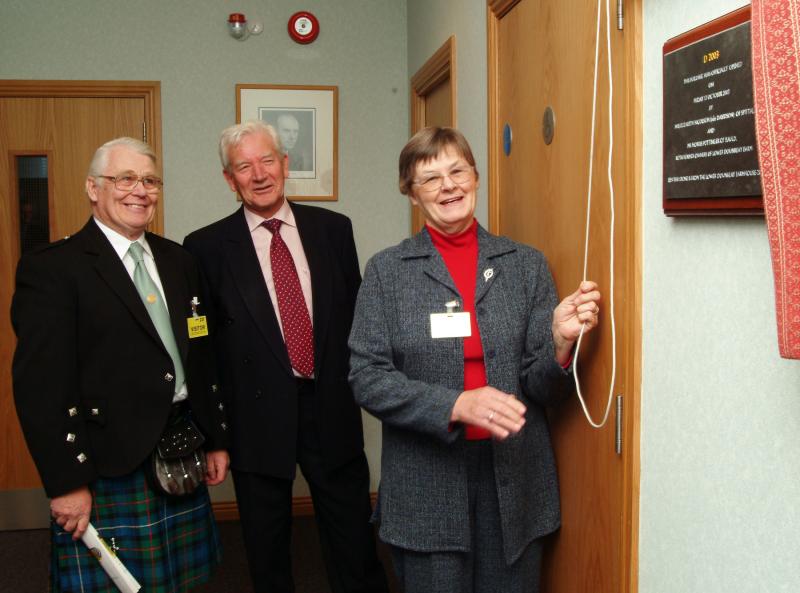 | Caithness.Org | Community | Business | Entertainment | Caithness... | Tourist Info | Site Map |
• Advertising • Chat Room • Contact Us • Kids Links • Links • Messageboard • News - Local & Scottish • News - UK & News Links • About / Contact Us • Submissions |
• Bookshop • Business Index & News • Jobs • Property For Sale • Property For Rent • Shop • Sutherland Business Index |
• Fishing • Fun Stuff • George, The Saga • Horses • Local Galas • Music • Pub Guide • Sport Index • What's On In Caithness |
• General Information • B & Bs • Backpackers • Caravan & Camping • Ferries • Getting Here • Holiday Letting • Hotels • Orkney • Pentland Firth • Sutherland • Taxis |
| N E W S F E E D S >>> |
|
Caithness.org News Bulletins |
||
| Dounreay News Index | Caithness.org News Index | |
|
NOSTALGIC RETURN TO DOUNREAY FOR
FORMER FARM RESIDENTS 18 October 03 Two of the last people to live on a Caithness farm before it was transformed during the 1950s into a world-leading centre for research and development of nuclear energy today returned to their former home to set the seal on a £5 million investment in its decommissioning. The farm at Lower Dounreay was home to Mrs Elizabeth Nicolson until 1945, and Mr Morris Pottinger until May 1956. The UK Atomic Energy Authority acquired the house and farmland from Mr Pottinger and his late wife Nettie in November 1955 following a Government announcement that Britain's fast reactor experiment would be sited at Dounreay. The Dounreay farmhouse dates from 1859. Following its acquisition by the UKAEA in 1955, it was used variously for office accommodation and storage of archive material. |
||

Morris Pottinger, Peter Welsh, Elizabeth
Nicolson (Morris & Elizabeth were both former residents of the Farmhouse)
|
The experiment came to an end in 1994 and the farmhouse, steading and office buildings subsequently erected around them are now being demolished to make way for the construction of new facilities needed to dismantle legacies from that era. Today, Mrs Nicolson and Mr Pottinger returned to Dounreay to officially open a new, three-storey office block completed earlier this year to replace the accommodation being demolished. In the foyer of the new £5
million building, which has become the nerve centre for decommissioning
of the site, they unveiled a commemorative plaque made from slate
removed from the roof of the farmhouse. They were presented with sets of
coasters also made from roof slates, as were members of the Oag family
who lived at Lower Dounreay from 1945 until 1953 and who Mrs Nicolson, who now resides in Spittal, said: "My father, Major Jack Davidson, died while fighting with the 5th Seaforth Highlanders in Sicily in 1943. Today, the honour of being here allows me to close this final chapter of his life, and to pay tribute to him and so many others who also gave up their lives in the Second World War." Mr Pottinger still runs the neighbouring farm at Isauld, including most of the land of the former Lower Dounreay. His son Tom, now of Baillie Farm, was the last person to be born in the farmhouse at Lower Dounreay. He said a recent final visit to the old farmhouse had brought back many bittersweet memories of their start in farming half a century earlier. Dounreay site director Peter Welsh said: "The new accommodation is an investment in the future of Dounreay and I was delighted that Mrs Nicolson and Mr Pottinger, with their strong historical links to Dounreay's past, accepted our invitation to officially open it. "The investment in modern accommodation for 300 or so of our health and safety, environmental and engineering professionals provides them with a first-class working environment from which they can help us to deliver the decommissioning and restoration of the site." The main contractor for the office construction project was the Robertson Group of Elgin. The construction phase took 18 months to complete and created employment for 70 people. The main contractor for the demolition of the former farmhouse and surrounding properties is KDC Contractors Ltd. Dounreay was Britain's centre of fast reactor research and development from 1955 until 1994. Three nuclear reactors, chemical separation plants and a variety of fuel and waste facilities built in support of the experiment are now being decommissioned. |









